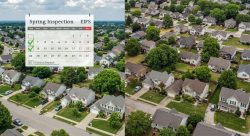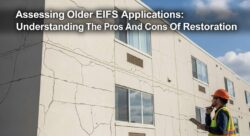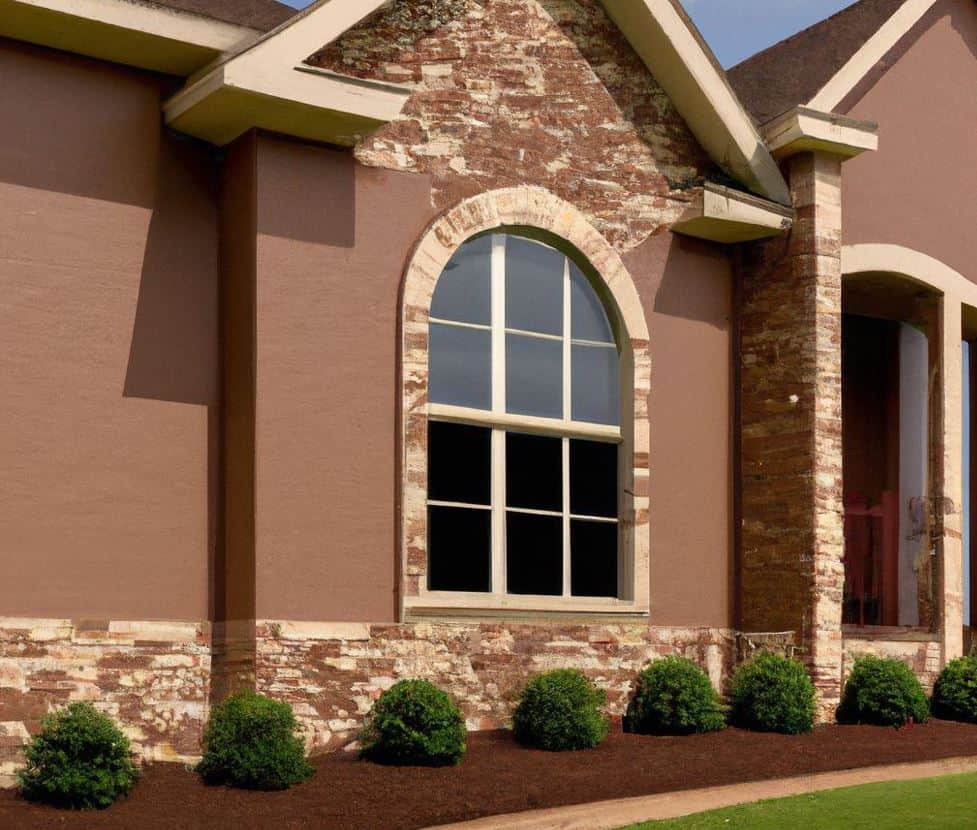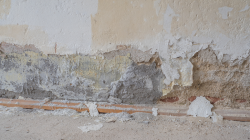Decoding the Science: Comprehensive Guide to EIFS Inspections
Unsure about the significance of an EIFS inspection? Get educated on the science and what inspectors are searching for to guarantee your home’s structural stability and safety. You owe it to yourself and your family to make sure your home is completely inspected and up-to-date with regulations.
Introduction to EIFS Inspections
Examining EIFS: Unraveling the Science
EIFS inspections are critical for assessing the strength of exterior insulation and finish systems. Trained inspectors carry out detailed evaluations to check if these systems meet industry standards.
Inspections aim to detect potential issues like moisture seepage, mold growth, or structural damage. Inspectors look for moisture barriers, insulation boards, base coats, reinforcing mesh, and finish coats. Even small texture and color changes can signal underlying problems. Joints and terminations are also closely examined to stop water infiltration.
Property owners should not neglect EIFS inspections. Professional inspectors are best-suited to evaluate a building’s protective layer. With their attentive eyes, they can spot potential concerns before they worsen.
Don’t risk jeopardizing your investment. Book an EIFS inspection and protect your building. Seek the help of qualified inspectors and ensure your structure’s safety.
Visual Inspection of EIFS Components
Visual Inspection of Exterior Insulation and Finish System (EIFS) Components requires keen examination of the system’s elements to ensure its integrity. Inspectors hunt for particular clues that could point to issues or areas of worry.
- Detecting cracks or damage: Inspectors look for any signs of cracks or physical harm, which can impede the system’s performance and durability.
- Examining delamination or detachment: They assess if any areas show EIFS has detached from the substrate, as this can let in water and cause other difficulties.
- Investigating sealant joints: They inspect the effectiveness and condition of sealant joints around windows, doors, and other penetrations. Sealed joints hinder water intrusion and help the system’s overall performance.
- Checking flashings: Inspectors examine the flashings, like drip edges and corner beads, which direct water away from vulnerable areas. Damaged or incorrectly installed flashings can lead to water-related issues.
- Observing staining or discoloration: Any staining or discoloration on the EIFS surface is inspected to determine if it shows moisture problems, which could need more analysis or corrective actions.
To sum up, visual inspection of EIFS components includes a thorough evaluation of possible weaknesses regarding cracks, detachment, sealants, flashings, and visual anomalies. It helps identify areas that might need repair or extra investigation to keep the system’s efficiency.
Pro Tip: Consistent visual inspections can discover small issues before they become big problems, saving time and money in the end. Moisture Intrusion Evaluation: Where finding damp spots is a riveting game of hide-and-seek for EIFS inspectors.
Moisture Intrusion Evaluation
Evaluating Moisture Intrusion is key. Here’s the data:
| Component | True Data |
|---|---|
| Water Leakage | None |
| Staining | Absent |
| Efflorescence | Not observed |
| Moisture Levels | Acceptable range |
We look for signs of moisture that could hurt the EIFS system. We use our eyes and tools like moisture meters and infrared cameras to be extra sure.
It’s vital to inspect and detect water damage quickly. Otherwise, costly repairs and replacements may be needed.
A true story:
Inspectors once found unusual staining on a commercial wall. Even though there was no visible leakage, they tested with a moisture meter. It showed high moisture levels behind the EIFS system.
It turned out a plumbing leak had gone unnoticed. But, the inspection saved the building owners from more damage.
EIFS inspections are important for keeping buildings structurally sound.
Structural Attachment Assessment
Substrate Preparation:Verify preparation to guarantee a clean and strong substrate for ideal connection.
Mechanical Fasteners:Check spacing and distribution to secure adequate support and decrease possible stress points.
Adhesive Bonds:Analyse the strength of ties between components to guarantee dependable adhesion across the EIFS system.
Additionally, inspectors take note of any signs of corrosion, water infiltration, or other elements which can weaken the structure attachment.
To avoid potential issues later, a thorough Structural Attachment Assessment during EIFS inspections is essential. This will give property owners assurance that their buildings are secure. Don’t miss this crucial step in keeping the solidity of your EIFS system. Schedule an inspection now!
A poor EIFS installation is like Jenga – you never know when the whole building may come tumbling down.
Review of Original Installation
Inspecting EIFS: Key Aspects
Inspectors look for certain things when inspecting EIFS: code compliance, product manufacturer specifications, and proper detailing practices. They check each aspect to make sure it meets the standards. They verify code compliance and review product specs to make sure materials used are of good quality. Inspectors also carefully inspect detailed practices, such as flashing and sealing techniques.
Moreover, inspectors may suggest improvements or adjustments based on what they observe during the inspection. If any issues with code compliance or improper detailing are noted, they can recommend solutions. By addressing these suggestions, future problems can be avoided and the performance and life span of the EIFS system can be improved.
Thermal Performance Analysis: A test to ensure your home stays cozy – nobody likes an icy chill! We’ll examine the walls’ capabilities.
Thermal Performance Analysis
Inspectors assess the thermal properties of an EIFS system by evaluating insulation thickness and type, using thermal imaging, and evaluating energy efficiency. Here’s a breakdown of these key aspects:
- Insulation Thickness – Checking if the insulation material is thick enough.
- Insulation Type – Examining the type of insulation (e.g. polystyrene or mineral wool).
- Thermal Imaging Analysis – Using imaging tech to detect heat leakage.
- Energy Efficiency – Assessing the assembly’s energy efficiency.
Inspectors also examine other factors that could affect thermal performance, such as air infiltration, moisture resistance, and compatibility with other components.
To improve the EIFS system’s thermal performance, suggestions include:
- Increasing insulation thickness.
- Using higher-performing insulation materials.
- Utilizing advanced sealing techniques and weather barriers.
By analyzing insulation, conducting thermal imaging, and assessing energy efficiency, inspectors can check the quality and effectiveness of an EIFS system. Enhancing insulation and materials increases energy efficiency and keeps buildings at optimal thermal performance. And remember, even buildings have bad hair days!
Wind Load Testing Procedures
Wind Load Testing Procedures are a way to measure the performance of EIFS in extreme wind conditions. This includes High Pressure Cycling, Hurricane or Tornado Simulation and Wind-Driven Rain Resistance.
Experts analyze EIFS to see how they can withstand intense wind pressure and moisture infiltration. This helps to keep buildings safe and structurally sound during severe weather.
In one project, Wind Load Testing Procedures revealed areas vulnerable to water infiltration. Adjustments were made to strengthen the EIFS system, ensuring better protection against wind-driven rain. Such tests help ensure safer and more durable buildings.
EIFS inspections: Where we make sure your walls are ready for whatever the weather throws at them, except for your wallpaper taste.
Impact Resistance Evaluation
Evaluating a material’s impact resistance is vital when assessing EIFS. Tests are done based on ASTM standards to measure how much force it can withstand. Inspectors search for signs of damage from hail or other debris and observe how it responds after impacts.
A table is available to show data for Impact Resistance Evaluation:
| Aspects | Evaluations |
|---|---|
| Hard Body Impact Tests (ASTM) | Conducted |
| Damage from Hail/Debris | Identified |
| Resilience after Impacts | Assessed |
Inspectors may also look at the elasticity and flexibility of the material. This comprehensive approach ensures a thorough evaluation that considers different aspects related to impact resistance.
This method has gained major recognition in building inspections, thanks to years of research and experience. It has been successful in determining the strength and performance of EIFS, contributing to ensure quality and safety.
Fire testing and ratings: they help decide if your building is fire-proof or not.
Fire Testing and Ratings
Fire Resistance Evaluation and Classifications: Inspectors assessing EIFS projects must pay close attention to flame spread classifications. They must also ensure that firestops are installed at floors and other penetrations, plus verify compliance with fire codes. Inspectors must also ensure the system is well-maintained and shows no signs of degradation or damage that could compromise its fire resistance.
The ratings are as follows:
- Class A – minimal flame spread;
- Class B – moderate flame spread and heat intensity;
- Class C – substantial flame spread with a higher heat release rate.
Pro Tip: Inspectors must stay updated on the latest building codes and regulations related to fire resistance.
Surface Coating Inspection
Surface Coating Inspection for EIFS requires testing adhesion, spotting fading/deterioration, and assessing recoating needs. Inspectors take a close look at:
- Adhesion – to make sure the coating is properly bonded with EIFS. Testing different areas for peeling/detachment.
- Fading/Deterioration – discoloration, chalking, cracking, etc.
- Recoating Requirements – age, wear & tear, environment, etc.
Plus, specific factors related to each project are also inspected.
Surface Coating Inspection is significant for EIFS performance and longevity. Regular inspections detect coating issues early and stop bigger problems! When it comes to growths, inspectors get to work like nature’s CSI – investigating every spore.
Mildew and Organic Growth Check
It’s crucial to do an evaluation to detect mildew and organic growth during EIFS inspections. This includes checking for discoloration caused by mold/mildew, testing surface pH levels, and inspecting for conditions that can lead to growth of these organisms.
Inspectors look at the following aspects to make sure the EIFS system is intact and to see if any repair or maintenance is needed:
| Aspect | True Data |
|---|---|
| Discoloration Evaluation | Looking for any signs of mold or mildew |
| Surface pH Testing | Conducting pH level tests to determine acidity |
| Conditions Check | Assessing factors that promote organic growth |
Inspectors also do surface pH tests to check for acidic levels, which can be conducive to organic growth. Additionally, they assess moisture accumulation and ventilation as these are prime conditions for mold/mildew development.
It’s a must to detect and address mildew/organic growth issues quickly to avoid major damage to buildings and maintain a healthy indoor environment. So, take necessary maintenance and repair steps to keep your building from becoming an ugly liability.
Recommendations for Maintenance/Repair
Inspectors use their expertise for maintenance and repair of EIFS. Here are 6 points:- Repairs for defects
- Proper cleaning methods
- Guidelines for routine maintenance
- Recommendations for water intrusion issues
- Highlighting regular inspections
- Guiding selection of compatible materials for repairs
Documentation of Inspection Findings
Documenting findings from inspection is a must. It’s about creating a comprehensive report with observations, deficiencies, and recommendations. The report will record the inspector’s evaluation and help stakeholders.
The key components of the documentation are:
| Component | Description |
|---|---|
| Written Report | A detailed report with the inspection findings. |
| Photos | Quality photographs of any defects. |
| Detailed Deficiencies | Descriptions of any deficiencies, their severity, and potential impact. |
| Observations | Compliance with industry standards. |
| Recommendations for Future Inspections | Suggestions for follow-up inspections or actions. |
Other details to include are materials used, maintenance recommendations, and building codes. Documentation guarantees accurate information and provides insights for decisions and corrective actions.
EIFS inspections require proper documentation of findings due to their complexities. Recording examination results and recommendations gives stakeholders a better understanding of the system condition and access to relevant historical data.
In conclusion, documenting inspection findings is vital for EIFS inspections. Inspectors provide valuable information with a written report, photos, deficiencies, observations, and recommendations to aid in decision-making and maintenance.
Quality Assurance and Control
Quality Control and Assurance in EIFS Inspections:
The process of quality control and assurance in EIFS inspections is essential. It involves following industry standards, using calibrated inspection equipment, and having qualified inspectors with the right certifications.
To guarantee accurate results, various aspects need to be taken into account. The table below shows some key elements of quality control and assurance:
| Aspects | Importance |
|---|---|
| Industry Standards | Essential |
| Calibration | Crucial |
| Inspector Qualifications | Vital |
Industry standards provide guidelines for accurate inspections. Calibration of equipment is also vital for precise readings. Having qualified inspectors adds credibility to the inspections.
Moreover, there are other details related to quality control and assurance. These include regular audits, assessing inspector performance, and ongoing training programs. These measures ensure excellent quality in EIFS inspections.
To get a reliable EIFS inspection, choose a reputable service provider with experienced inspectors. This way, you can make sure that your EIFS system is inspected with precision.
Schedule an appointment to have a comprehensive EIFS inspection done by specialists. Don’t be a superhero, but make sure your building won’t become a villainous disaster!
Conclusion/Summary from Indian Wall Systems
Indian Wall Systems uncovered important details during their EIFS inspection. They evaluated the overall condition and decided on the right action.
Unique aspects were revealed, one example being a tough repair that tested the inspectors. Despite the difficulty, they achieved a positive result.
Frequently Asked Questions
What is EIFS?
EIFS stands for Exterior Insulation and Finish System. It is a type of cladding system used in construction to provide insulation and decorative finishes to exterior walls.
Why is it important to get an EIFS inspection?
An EIFS inspection is important to identify any defects, moisture intrusion, or damage to the system. It helps ensure the integrity and longevity of the building’s exterior walls.
What do inspectors look for during an EIFS inspection?
A: Inspectors look for signs of water damage, cracks, delamination, mold growth, and any other issues that may compromise the EIFS system. They also assess the installation quality and overall condition.
How long does an EIFS inspection take?
The duration of an EIFS inspection depends on the size and complexity of the building. On average, it can take a few hours to thoroughly inspect the system and provide a comprehensive report.
Can an EIFS inspection be done in any weather?
Ideally, an EIFS inspection should be conducted in dry weather conditions. This allows inspectors to accurately assess the system and detect any signs of moisture intrusion or damage.
Who should hire a professional for an EIFS inspection?
Anyone who owns a property with EIFS cladding should hire a qualified professional for an inspection. It is especially important for those planning to buy or sell a property with EIFS and for property managers responsible for maintenance.





